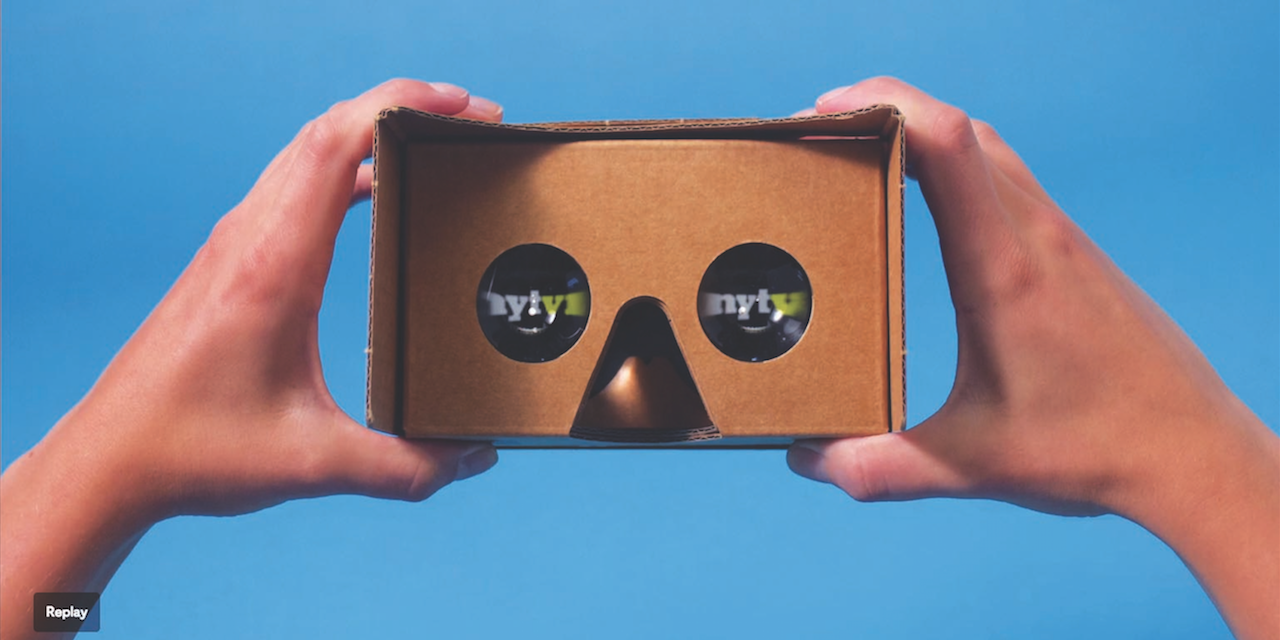I’m standing on Mars. Which is pretty cool. Google Cardboard’s virtual-reality trick really works. Now I’m dangling from a helicopter high above Manhattan. Even cooler. And now I’m immersed in an action film starring a shiny new Mini Cooper. Except it’s less cool, because it’s just people talking to one another. There’s only one direction worth looking in, which basically makes virtual reality pointless. Mini seized on a fresh new tool, but then did a tired old thing with it. It’s a bad habit marketers have. Sometimes bleeding-edge tech is a stepping-stone to innovation, but, too often, it’s an assassin.
I don’t mean to pick on Mini. I applaud the company’s fearless dive into this latest storytelling technology, continuing a pioneering knack for branded content that goes back 15 years (to parent company BMW’s series of short films known as The Hire). It’s just that the strange experience of being surrounded by a virtual landscape in which only one thing is happening suddenly felt like a metaphor for where marketing technology finds itself today. When even Facebook’s bid to sell its advertising platform is to make it resemble broadcast television, I have to conclude that marketing’s problem is a lack of vision, not a lack of invention.
For Marketing Subscribers
• What marketers need to know about the possibilities of the VR age
Unfortunately, this is an old pattern. When desktop computers landed in ad agencies and marketing departments in the ’80s, their arrival was poignantly anticlimactic. One day, someone just came along and took the IBM Selectrics off secretaries’ desk, replacing them with humming, putty-coloured boxes. People in suits peered from their doorways like cows watching a train go by, and the secretaries simply resumed typing. It would be a long while before anybody seriously wondered if the things had any utility beyond reducing Wite-Out and carbon paper costs.
Unsurprisingly, the obstacle was those people in suits. Career success has a way of throttling curiosity. Too many of marketing’s mandarins saw this new gadget as simply a path to efficiency and took no more interest in its potential than they might have in getting their oil changed. It happened again at the birth of the web, again with the emergence of marketing automation and again with social media. The people with the biggest stakes in the future, not to mention the most power to force innovation, sat and twiddled their Rolodexes instead.
As a result, the task of reinventing marketing has consistently fallen to people who know nothing about marketing. That hasn’t entirely been a curse; revolution is always easier when your foot soldiers have no affection for the past. But in a more fundamental sense, marketing innovation often misses the guidance of brand strategy, the art of persuasion and the simple imperative of customer empathy. And from the beginning until today, a key problem has always been leaders’ reluctance to be seen messing around at the skinny end of the adoption curve. Nobody studies what the C-suite plays with in its spare time, but too often, I bet, the answer is still golf clubs.
When I think about the marketers who survived that first digital revolution, a sense of play is the common denominator. The people of that generation who are still in the game and making a difference today are the ones who giddily charged off to buy PalmPilots and mobile phones that weighed down their suits like bricks. They were the early adopters distracting everybody in meetings so they could show off their latest toys, never the luddites having to be awkwardly introduced to this stuff by an underling. They weren’t always right about the Next Big Thing—but they knew it when they saw it. Playing gave them vision.
If that doesn’t sound like you, it probably should. This revolution isn’t over yet, and it’s still crying out for leadership. So buy some toys and play. Waste time online. Use up all your bandwidth. Be wrong a lot. Don’t wait for the future to be brought to you on a satin pillow just because you’re the boss. In the quest to reinvent marketing, the nerds have tried in vain to become leaders. If we’re going to get the job done, it’s time to reciprocate.
This story originally appeared in Canadian Business.











